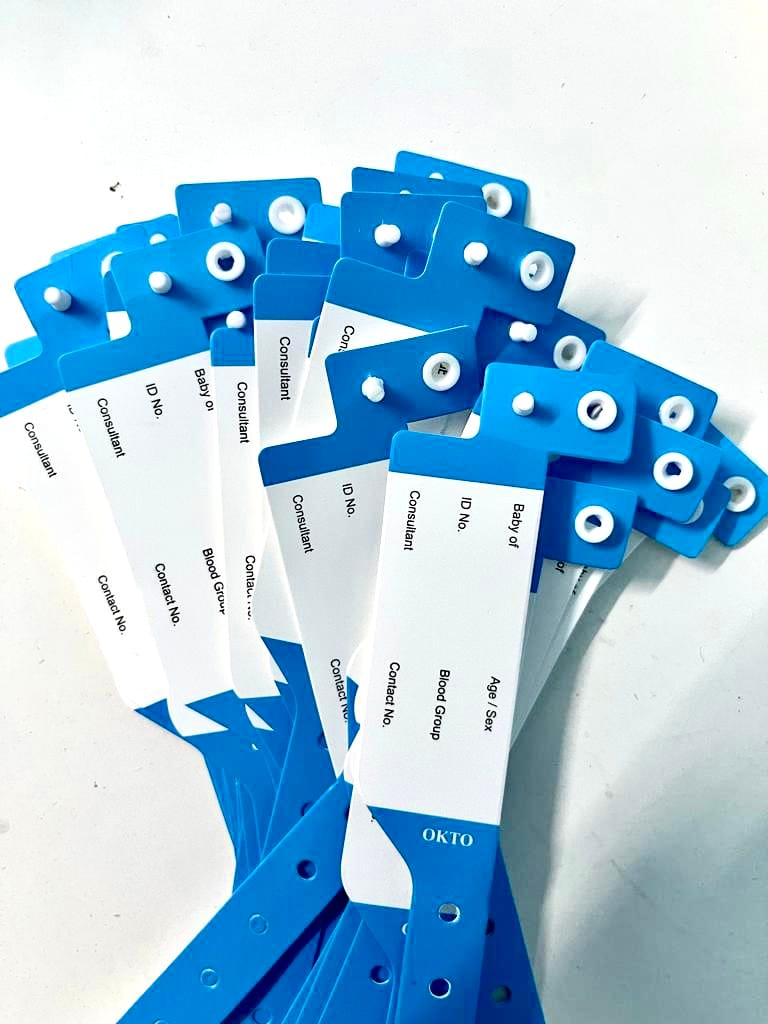Patient Identification Band: A Must-Have for Streamlined Hospital Procedures
Patient Identification Band: A Must-Have for Streamlined Hospital Procedures
Blog Article
Enhancing Safety: The Value of Patient Identification Bands in Health Care
In the world of health care, the efficiency of patient recognition bands can not be overstated, as they work as a basic safeguard against misidentification and subsequent errors. These bands, commonly overlooked, include essential information that is important for ensuring client security and ideal therapy outcomes. Nevertheless, the execution of reliable recognition methods postures a number of challenges that health care providers should browse. As we check out the complex duty of these bands, it comes to be evident that their value expands past plain recognition, questioning concerning ideal methods and future developments in client safety.
Summary of Patient Identification Bands
Patient recognition bands play an important role in making certain the safety and security and precision of client treatment in healthcare setups. These bands, normally worn on the wrist or ankle joint, function as an essential device for confirming client identification, consequently reducing the threat of errors in therapy, medication management, and other medical care procedures. Made from durable materials, person identification bands often consist of essential info such as the person's name, date of birth, clinical document number, and barcodes or QR codes for scanning.
The application of person identification bands is important in numerous healthcare atmospheres, consisting of medical facilities, outpatient centers, and long-term treatment establishments. They add to an organized strategy in individual management, allowing health care specialists to rapidly and precisely determine patients, particularly in high-pressure scenarios where speedy decision-making is vital.
Additionally, the usage of these bands is straightened with governing criteria targeted at boosting client security - Patient Identification Band. By ensuring that each individual's info is conveniently proven and readily available, health care carriers can keep a high criterion of treatment, minimize the incidence of unfavorable events, and foster a culture of safety and security within healthcare institutions
Benefits of Accurate Identification
Precise identification is basic to boosting patient safety and security and care top quality in health care setups. It offers as the very first line of defense against errors that might cause negative individual results. By guaranteeing that each person is correctly identified through dependable means, such as patient identification bands, healthcare carriers can considerably minimize the risk of misidentification, which can bring about improper treatments, medicine errors, and also surgical mix-ups.
In addition, precise patient recognition helps with effective interaction among health care teams. When all team member can continually recognize clients, they can share crucial details a lot more effectively, resulting in better coordination of treatment. This is especially vital in emergency situation circumstances where prompt treatments are vital.
Furthermore, precise recognition supports conformity with regulatory criteria, thereby minimizing the threat of lawful consequences for healthcare centers. It fosters count on in between people and doctor, as patients really feel much more secure understanding that their identifications are being safeguarded.

Usual Difficulties Dealt With
Guaranteeing effective person identification in health care settings provides a variety of difficulties that can jeopardize safety and care top quality. One substantial obstacle is the variability in patient populations. Clients may get here in a state of confusion or distress, making exact identification difficult. Additionally, language obstacles can impede effective interaction, making complex the verification procedure.
One more obstacle is the reliance on human aspects in identification visit the site treatments. Healthcare experts might unintentionally neglect or misinterpret recognition methods, specifically in high-stress environments such as emergency departments. This can lead to errors, consisting of the administration of wrong treatments or drugs.
Technological concerns also posture difficulties. Digital health document (EHR) systems are developed to enhance person recognition, system failures or individual errors can interfere with the procedure. In addition, the physical design of individual ID bands can cause readability concerns, particularly in instances where bands are harmed or covered.
Finally, irregular training amongst personnel regarding identification procedures can lead to spaces in understanding and technique. Resolving these obstacles is critical for boosting patient safety and security and guaranteeing that recognition bands serve their desired function successfully.
Finest Practices for Execution
To successfully execute patient recognition bands in medical care settings, organizations must take on a multifaceted technique that prioritizes training, technology, and standardization combination. Standardization includes establishing clear methods for the layout, application, and use identification bands throughout all departments. This makes certain consistency and reduces the threat of errors connected to differences in band types or identifying techniques.


Training is crucial for all healthcare team to ensure they comprehend the relevance of exact patient identification, exactly how to correctly apply and review recognition bands, and the procedures to follow in instance of inconsistencies. Normal workshops and correspondence course can reinforce this expertise and advertise a culture of security.
Innovation combination plays a crucial function in boosting the performance of individual recognition bands. Utilizing barcode scanning or RFID technology can streamline the identification procedure, enabling for real-time confirmation of client identities. Additionally, digital health and wellness record systems should be configured to include alerts for inequalities in between the identification band and individual information.
Future Trends in Individual Safety
As healthcare proceeds to progress, the focus on client safety and security is likely to increase, driven by advancements in innovation and a higher understanding of systemic risks. Emerging patterns show a shift in the direction of more integrated systems that utilize data analytics, expert system, and equipment knowing to improve client recognition processes. These modern technologies can assist identify possible safety problems before they rise, thereby lowering errors related to misidentification.
Additionally, the application of blockchain modern technology may change how patient data is firmly shared among doctor, ensuring that identification bands are constantly exact and updated. This will certainly not just boost person security yet additionally promote seamless interaction throughout multidisciplinary teams.

Furthermore, the growing concentrate on tailored medicine is anticipated to affect published here individual safety and security procedures. By incorporating genetic and group information right into recognition systems, medical care specialists can tailor treatments better, minimizing the risks of adverse reactions because of misidentification.
Conclusion
In verdict, patient identification bands offer as an important element in boosting safety within healthcare atmospheres. Inevitably, the continued focus on durable recognition methods will add to improved client outcomes and total safety and security in healthcare settings.
In the world of medical care, the efficacy of patient identification bands can not be overemphasized, as this hyperlink they offer as a fundamental secure versus misidentification and succeeding mistakes.Person recognition bands play a crucial function in making certain the safety and precision of individual care in healthcare setups. Made from sturdy products, client identification bands typically consist of necessary info such as the patient's name, date of birth, clinical document number, and barcodes or QR codes for scanning.
By guaranteeing that each individual is correctly identified with reputable methods, such as patient identification bands, medical care providers can substantially decrease the risk of misidentification, which can lead to unsuitable treatments, medicine mistakes, and even surgical mix-ups.
In final thought, person recognition bands serve as a vital element in boosting security within medical care environments. Patient Identification Band.
Report this page